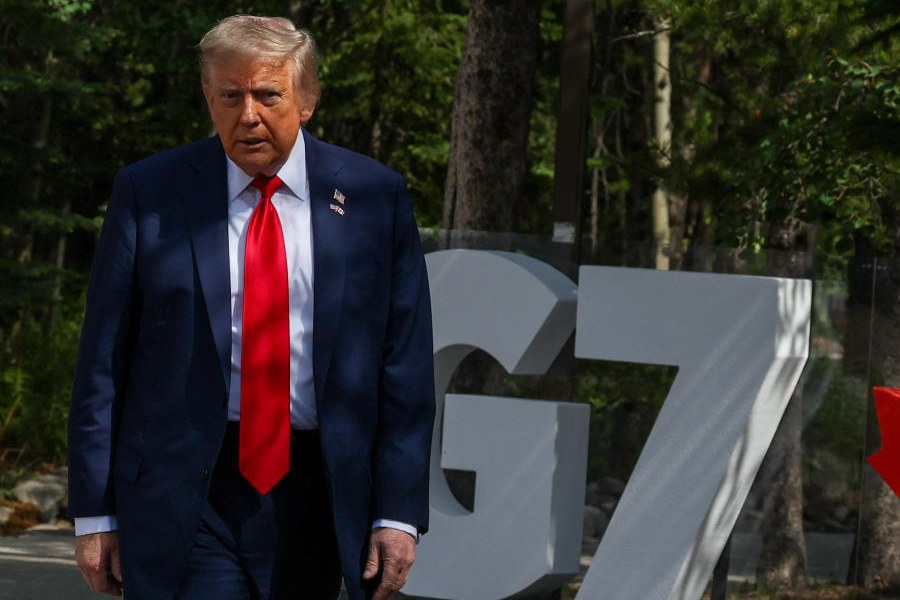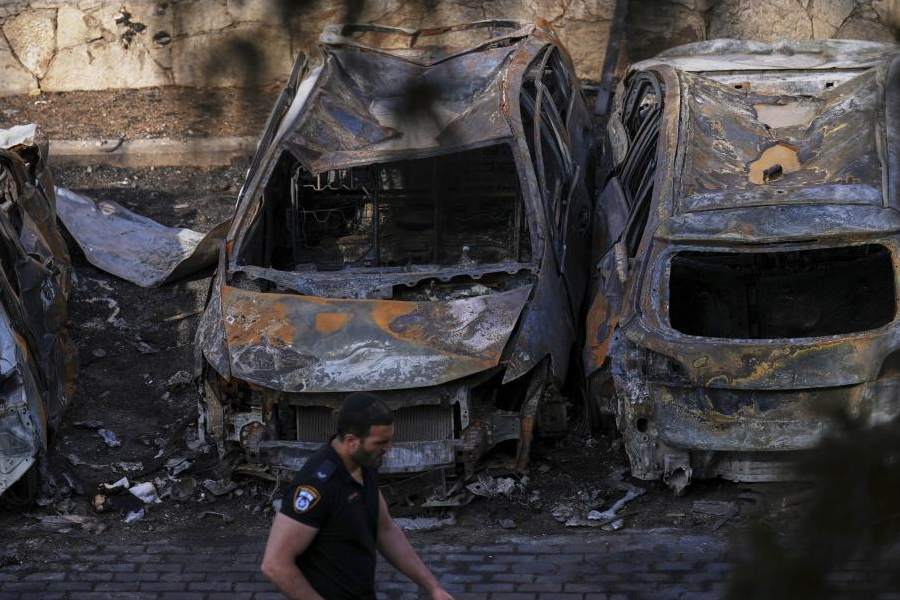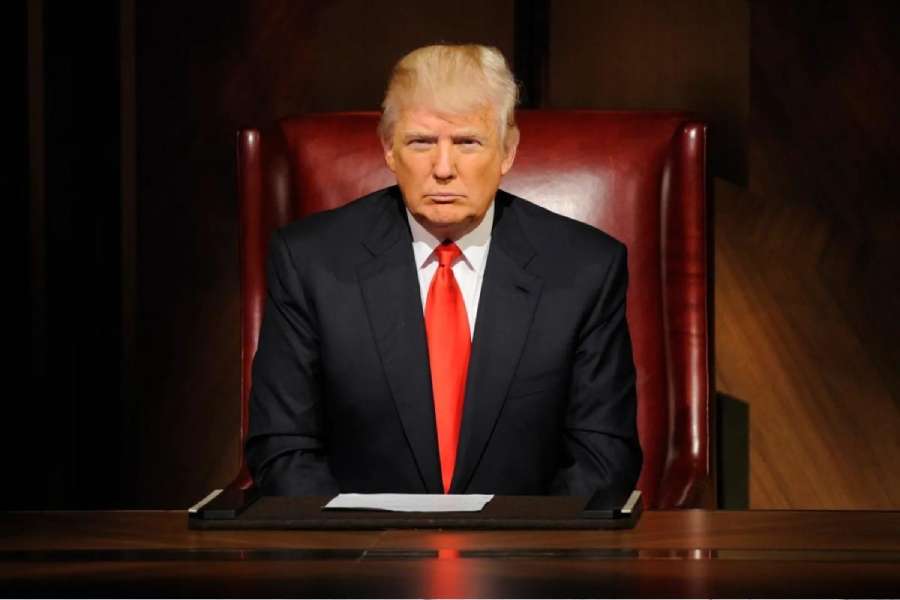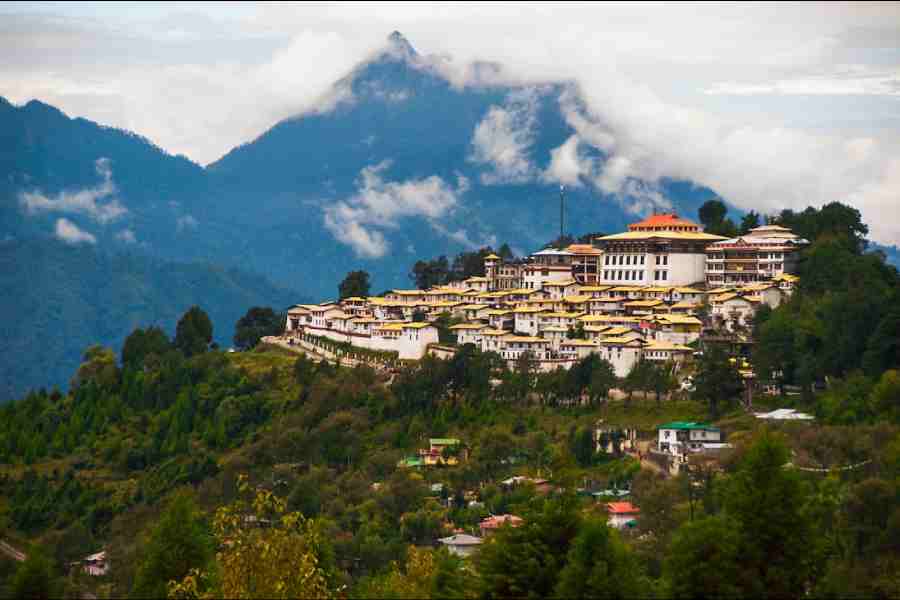 |
| HEAVY METTLE: Subodh Gupta’s Very Hungry God, a giant skull sculpted with stainless steel utensils, was bought by French billionaire Francois Pinault and is currently exhibited on a platform over the Grand Canal at the entrance to the Palazzo Grassi museum in Venice. (Top right) The artist at his Delhi home; (right) another Gupta creation |
Subodh Gupta is a busy man these days — even squeezing half an hour out of his tight schedule is tough, but he obliges nonetheless. “Let’s get it over with quickly,” he says, sitting in his studio in the tony Delhi suburb of DLF City. His smiles don’t quite conceal the jumpy state of his mind, though, and it’s clear that the interview isn’t the only thing he happens to be thinking about.
Gupta, however, can be excused for his apparent anxieties. He has five exhibitions lined up through the next 16 months “and all the galleries want new works. I have too much on my hands right now,” he sighs.
Of course, Gupta knows his labour will pay off, perhaps the moment his works are unveiled under the spotlights in the many über galleries across the world that have sought to display his creations. There are many takers for his art, and Gupta knows it better than anyone else. Some in the art world go to the extent of saying that Gupta has outpaced every other artist from the country to become the only Indian artist recognised by serious western audiences, and they may not be exaggerating.
For Gupta has proved himself on the global stage. His works were showcased at the prestigious 2005 Venice Biennale, an honour few Indians can boast of, the Delhi-based Raqs Media Collective trio of Jeebesh Bagchi, Monica Narula and Shuddhabrata Sengupta being the exception. One of his paintings, Idol Thief, was sold for over US$ 185,000 at a Christie’s auction in Hong Kong in 2006. Another of his sculptures, Cheap Rice, carried a price tag of US $ 350,000 at an exhibition in Miami. His critically acclaimed Very Hungry God, a giant skull sculpted with stainless steel utensils, was bought by French billionaire Francois Pinault and is currently exhibited on a platform over the Grand Canal at the entrance of the Palazzo Grassi museum in Venice. Clearly, Subodh Gupta has hit big time. As an artist, he has managed to take the global circuit in his stride and the list of his artistic exploits is long. “To the art market, he is what the tabloids love to call ‘hot property’ these days,” says Abhay Sardesai, editor of Art India magazine.
All this, however, didn’t come easy to Gupta. Born in 1964, he grew up in the village of Khagaul in Bihar as the youngest of six siblings in a middle-class family. The son of a railway guard, he went to art college in Patna with the hope of becoming an artist. “But there were only four teachers in the whole college; so you can guess how much I learnt there,” he laughs. It’s one of the reasons Gupta likes to call himself a self-taught, self-made artist.
he came dreamy-eyed to Delhi in 1988, only to encounter a city that had no sympathy for a struggling artist. He was experimenting with his works, dabbling in different media and fusing motifs from his rural background with modern imagery, and that proved to be his bane. “No gallery in Delhi wanted to exhibit my works,” Gupta recalls. “I was broke, I was frustrated, but I decided to carry on doing what I wanted to do.”
Ironically, it was the West which first recognised his talent. In 1997, Gupta picked up the Gasworks international residency award to go and practise at the Gasworks studios in London. A year later, he received the Bose Pacia Award in New York. Then, after a few shows in the Far East, he ran into Nicolas Bourriaud, currently curator at the Tate Gallery, England, who offered to show his works in France. Gupta says he has never looked back since.
What exactly set Gupta apart from fellow artists? Bourriaud explains. “What struck me in his early works was the way he was spontaneously matching Western and Indian traditions with a real sense of elegance,” he says. “Gupta’s work is part of a global movement which is currently reinventing modernity, and is a strong example of ‘altermodernity’, as I would name it, that feeds itself with the local to address universal issues.”
Even today, much of Gupta’s works build on objects from day-to-day Indian life, such as brass and stainless steel kitchen utensils, milk cans, bicycles and rickshaws. His visualisation is radical — one of his works, titled Cow, for example, is a sculpture that has milk cans hanging from the armature of a bicycle. Curry, exhibited at the Venice Biennale, was a reproduction of a kitchen rack loaded with cutlery and utensils. “It’s straight out of any Indian kitchen, but is still universal,” says Gupta.
The Venice Biennale, needless to say, came as the icing on the cake for Gupta. “I saw Subodh Gupta’s work at the 2005 Biennale and since then he has become well integrated in the market,” says Italian art critic Massimo Duranti, reflecting Europe ’s attitude to Gupta’s works.
And if Rome-based Indian artist Karen Shah’s words are any indication, establishing oneself as an artist in Europe is not as easy as some might be given to think. “Being Indian may help in specific contexts, but in larger terms the content of one’s work is more important than one’s provenance,” she says.
By extending that logic, one can only say that Gupta has successfully shed his Indian identity to find global recognition solely through his art. It’s something many other Indian artists haven’t been able to achieve, instead appealing mainly to non-resident Indians or foreigners oriented towards India.
today, Gupta is represented by influential galleries such as the Art and Public in Geneva, the In Situ, Paris, and the Jack Shainman Gallery in New York. And ironically, his reputation in India has been growing since his big break in the West. While he was always represented back home by a couple of galleries, Gupta’s works have been striking pay dirt only of late — at an auction held by SaffronArt in March this year, an untitled painting by Gupta went under the hammer for about Rs 75 lakh. Fame has brought along with it affluence — Gupta has two houses in the capital and drives a Honda Civic.
Ask him about striking gold, however, and Gupta only smiles, recalling — in stark contrast — the years he spent in near poverty in Delhi towards the beginning of his career. “Frankly, if I hadn’t made it in the West, no one would have bothered to take me seriously in India. It’s the West which has made me,” he says without hesitation.
Artists back home, however, don’t want to take away from Gupta’s achievements, and have good words for him. “Gupta is a dynamic artist of the times, and has an ability to handle spectacles that impress,” says artist Vivan Sundaram. “I guess the timing of his arrival is in sync with global contemporary trends,” he says.
But that said, is there any assurance that Gupta will eventually go on to enjoy the same degree of recognition at home that the world has granted him? Not many can be sure. “There is a serious lack of vision in India, when it comes to institutionalising experimental art and new media,” says Mumbai-based critic and curator Nancy Adajania. “And by reducing art criticism to little more than lifestyle journalism, India only makes film stars out of its artists. Though private galleries are making an effort at an individual level, I doubt if the scene will change considerably in future,” she adds.
That, however, is no deterrent for Gupta. “I have a major exhibition coming up in Delhi in December 2008,” he says while putting the finishing touches to his latest sculpture (this depicts milk cans tied onto a motorcycle). “And I do want to show my works in India as much as I show them abroad. It’s just that I don’t have the time.”
Which is perhaps just as well.










